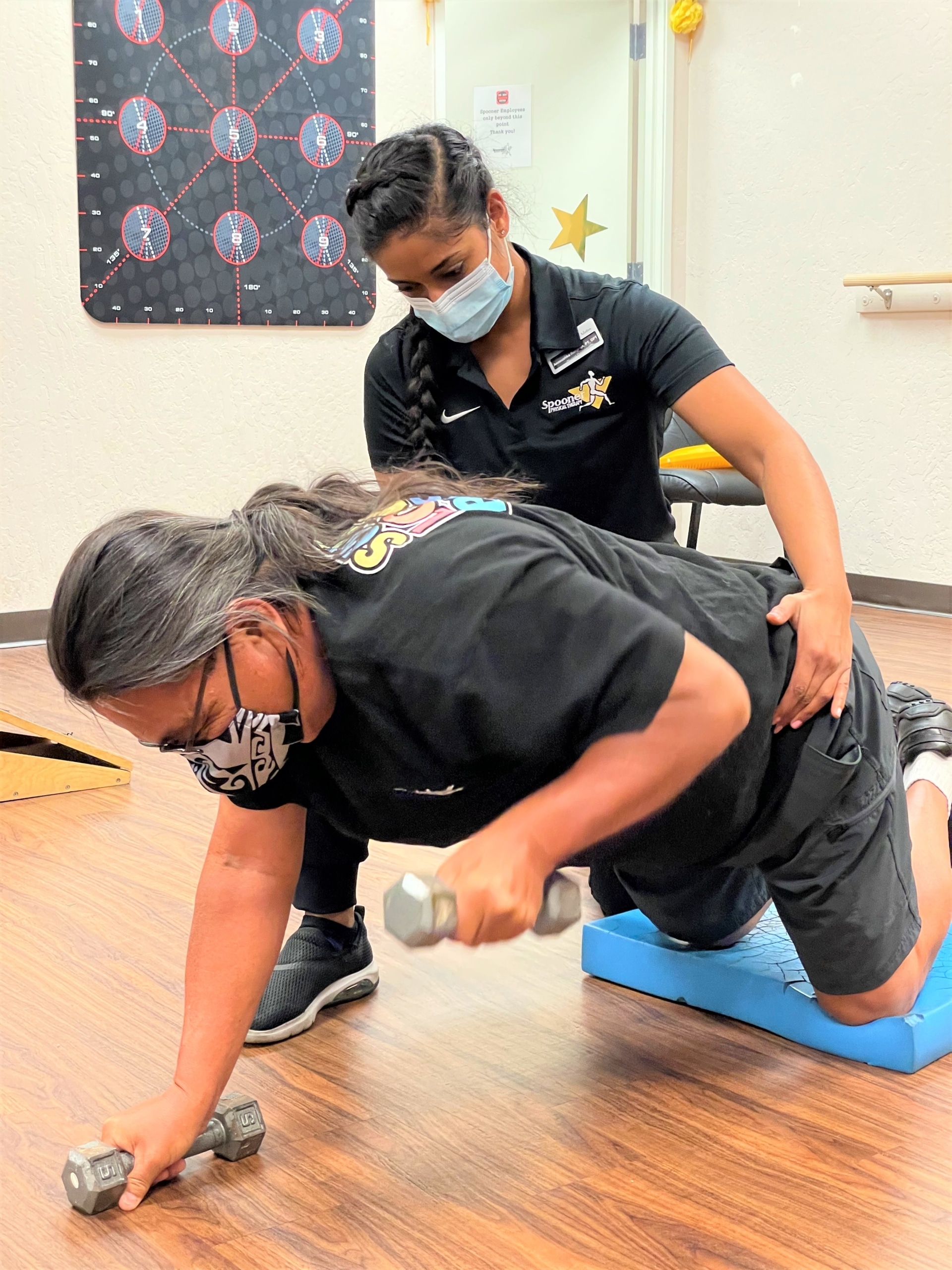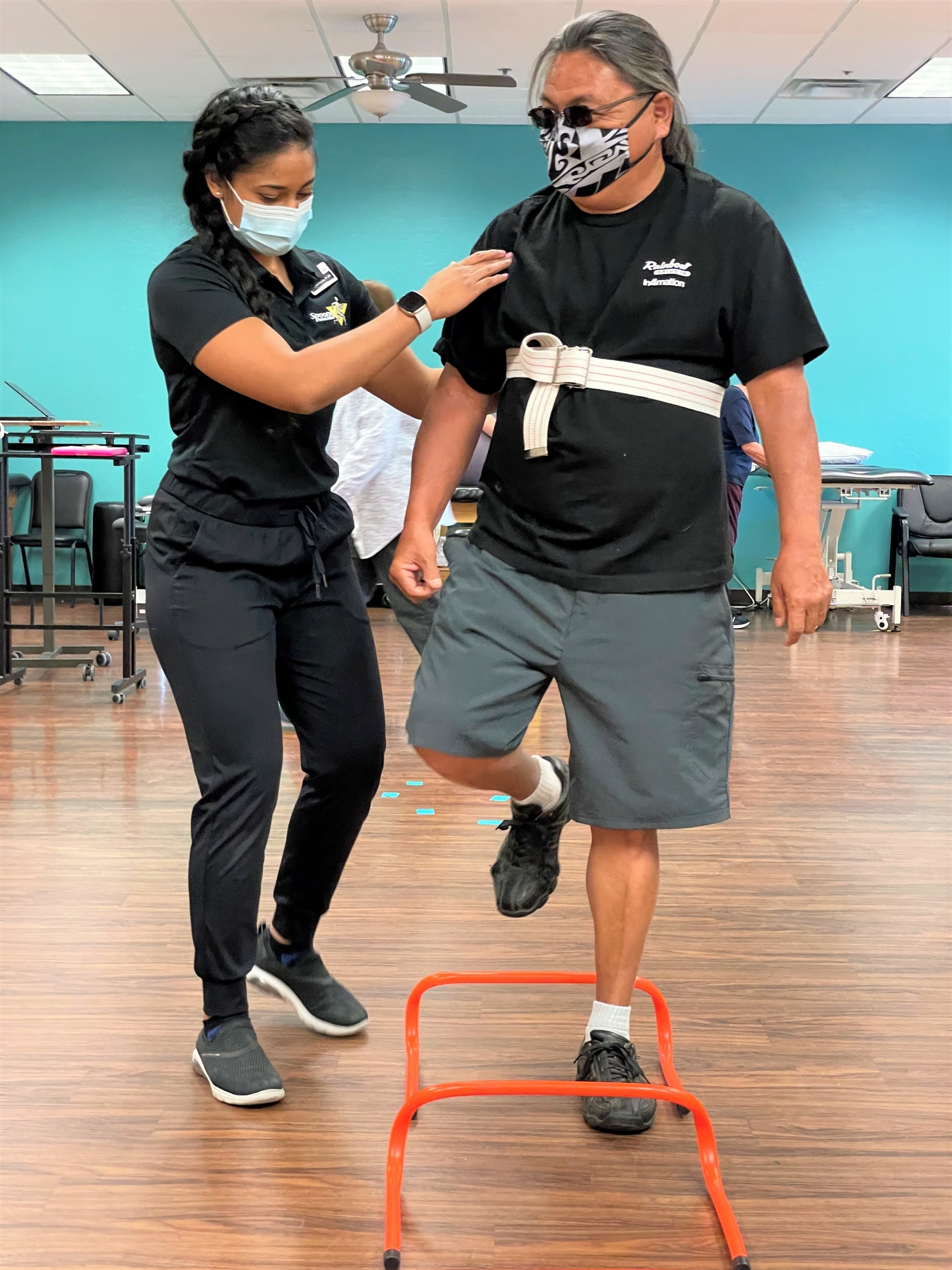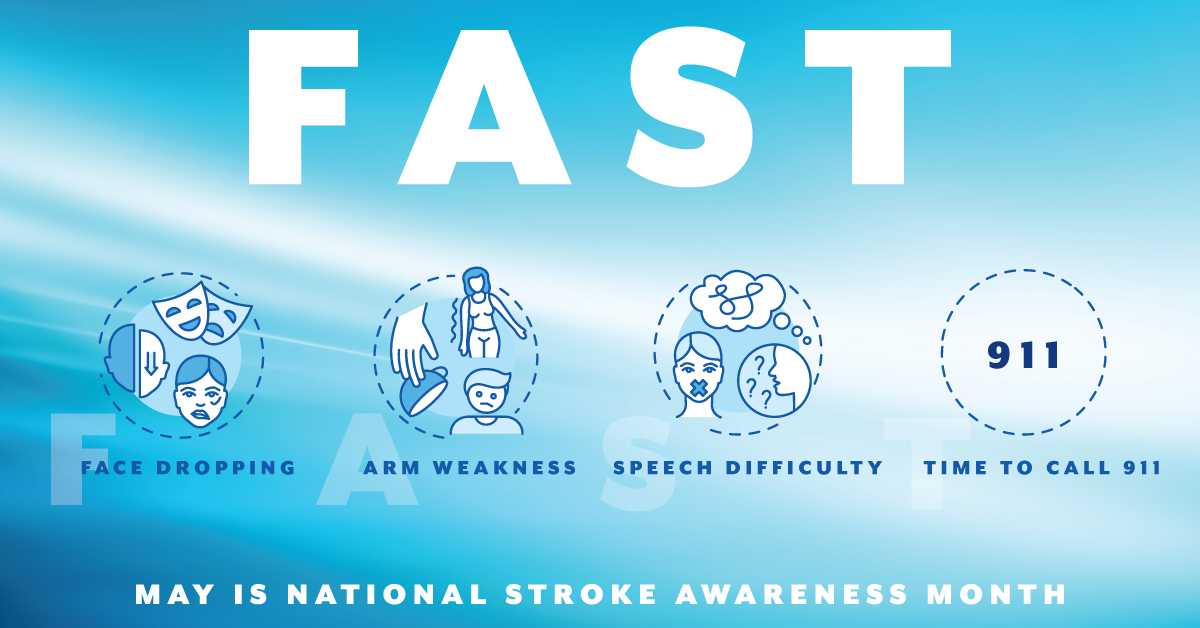Did you know 800,000 people have a stroke in the United States each year? Stroke kills twice as many women as breast cancer does, making stroke the third leading cause of death for women. Stroke is the fifth leading cause of death in the United States and the leading cause of serious long-term disability. Quick action when recognizing stroke signs and symptoms can help save lives.
During the month of May, Stroke Awareness Month, we strive to improve community awareness and better prepare families and loved ones for what can be the devastating effects of stroke. Spooner Physical Therapist Annoushka Ranaraja, PT, DPT, a neuro specialist at the Spooner North Mesa clinic speaks to the signs of a stroke and the benefits of physical therapy in the journey to recovery after a stroke.
First Things First – Know the Signs
It is important to know the signs of a stroke because early intervention can make a huge difference in recovery. Every minute counts when it comes to a stroke. Whether it is you or a loved one who is experiencing a stroke, recognizing these signs can make a world of difference:
The FAST acronym can help you remember the signs and act fast if the time arises.
F: Face drooping – Ask the person to smile. Is one side of the face drooping?
A: Arm weakness – Is one arm weak or numb? Does one arm lower more quickly than the other when asked to raise both arms?
S: Speech difficulty – Is their speech slurred? Are they hard to understand?
T: Time – If any of these signs occur, it is time to call 911 or seek emergency care immediately.

Reaching Your Goals
No stroke is going to be the same and every recovery experience is unique to the patient. After a cerebrovascular accident (CVA or stroke), your symptoms are largely determined by the area and amount of the brain that was affected. You might have difficulty doing everyday tasks or may struggle to get back to your favorite recreational hobbies. Physical therapy can play a big role in the recovery process, no matter what stage of the journey you might be in.
Annoushka says, “Sometimes, patients might not know the extent of the damage caused by a stroke or the benefits they can experience from physical therapy. A consultation with a physical therapist can help you better understand the possibilities and considerations. For example, a patient being treated for hemineglect is going to be very different than a patient with strength and balance limitations.”
The goal for any patient post stroke is going to be finding a team that will help you accomplish your personal goals and who will be able to continually progress you toward that goal. Annoushka recalls a time when she worked with a patient who presented to the clinic nine years post-stroke and after being told that she should give up on walking and move into an assisted living community. The patient came to physical therapy in a wheelchair and two years later she progressed out of the wheelchair to walking with a single point cane.
“Sometimes people hit a plateau and assume that they have progressed as far as they are going to get. I try to reinforce with my patients that it has nothing to do with hitting a plateau, but rather that they are ready to progress and be challenged even more! It is important to a therapist to ensure the intensity of rehab is increasing and that patients are being encouraged to continue toward reaching their goals and their fullest potential,” Annoushka explains.

Different Treatment Approaches
There are a variety of treatment approaches that can be taken depending on the severity and location of the stroke. Your physical therapist will be best equipped to provide you with the movement prescription to best meet your needs and will be able to provide you with a referral to occupational therapy or to a speech-language pathologist if there are considerations more appropriately treated by those disciplines. Sometimes patients might benefit most from working with an interprofessional team.
For patients with cognitive deficits, it’s important to incorporate more dual tasking with cognitive tasks. Annoushka says, “For example, I would do a picnic scenario where the patient has to list the items they would bring to a picnic in alphabetical order. They have to keep walking even while they are thinking of the items they are going to bring. You have to be able to walk and talk all the time, so this scenario forces them to walk while thinking.”
She says obstacle courses are a great way for patients to have blocked and random practice that require planning as well. Having a patient complete an obstacle course that keeps changing with different and unique obstacles makes them focus on reading the situation they are experiencing and plan before taking their next step.
The team at Spooner Physical Therapy is prepared to help you or a loved one every step of the way on the journey to recovery. It’s never too late to start physical therapy! Our physical therapists and occupational therapists will ensure your treatment approach is multifaceted to meet your goals and get you moving better, feeling better, and back to doing the things you love.
Schedule an appointment at one of our locations across the Valley!

